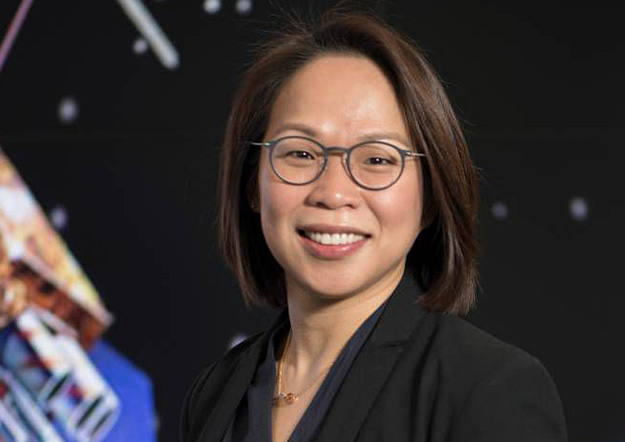
Suelynn Choy
We’re celebrating International Women’s Day 2023 this week by highlighting some of the remarkable women who are helping to make Australia’s geospatial sector a world-leader.
In this interview we speak with Suelynn Choy, Professor of Satellite Navigation at RMIT University.
Please tell us about your current role and responsibilities.
A typical workday for me includes teaching undergraduate and graduate students, development of curriculum and conducting research and experiments to advance knowledge in the field of precise GNSS positioning and atmospheric sensing. I’m involved in supervising MSc and PhD students, publishing scholarly papers and writing proposals for grants, as well as serving on expert research and academic committees. I also handle other administrative duties within the university.
How did you get into this field? What attracted you to it?
Becoming a professor was certainly not planned! I initially pursued a Bachelor (Hons) Degree in Land Surveying due to family ties — I was following in my dad’s footsteps. The plan was to return to my home country (Malaysia) to help dad with the family business. However, when I graduated, I was offered a generous scholarship by the Australian Government to pursue a PhD research degree. How could I say no to further education?
Around that time in 2005, GPS began to experience greater commercial use and innovation after the US had ended Selective Availability in 2000. (With the removal of Selective Availability, GPS positioning accuracy improved up to tenfold.)
At that time, GPS technology was the only fully operational and the best performing satellite navigation system for positioning, navigation and timing, and was at the forefront of high-precision positioning applications. In fact, the surveying/geospatial industry was one of the first industries to embrace high-precision GNSS positioning.
I wanted to further my knowledge in this field, make contributions towards improving the performance of GPS and find new ways for innovative uses of it.
What do you enjoy most about your job?
I enjoy the challenge of doing research, solving research problems, and knowing that my research outcomes are making a difference to society. And I feel pride when seeing the diversity of growth in my students, their joy in learning and being successful.
Are there any personal qualities or attributes that are helpful to have in this field?
Being resilient, open minded, collaborative and kind.
What makes you most proud about your role and achievements?
I am most proud of my achievement in having demonstrated — in an Australian first — that GNSS positioning data generated by local infrastructure, transmitted by a regional satellite navigation system, can be used to provide accurate (cm-dm level) positioning anywhere outdoors in Australia at any time. This has in some ways laid the foundations for the Southern Positioning Augmentation Network (SouthPAN) and the Ginan Analysis Centre software, which bring significant improvements to our current GNSS positioning, navigation and timing capabilities. This will in turn benefit many industries such as transportation, agriculture, resources, emergency services and mapping.
I was awarded the 2016 National Measurement Institute Prize in recognition of my research work.
As a woman, have you had many struggles during your career? Conversely, have you had a lot of support?
The biggest challenge I confronted was establishing my presence, credentials and credibility in a male-dominated industry. I was often one of the few women, if not the only woman (and Asian) in the room. And there were times when I was not taken seriously for career growth and promotion. But times are changing as the university and industry are recruiting more women into management and senior positions.
Yes, conversely, I have had a lot of support as well in my career development. Interestingly, that has come from my male colleagues, mentors and champions. They helped me to be heard and seen, build confidence, achieve my goals and ambitions, and have been role models.
What would you say to young women who are considering a career in geospatial?
The geospatial industry is one of the fastest growing industries, as geospatial (i.e. location) information underpins most business decisions, applications and services today. It opens up career possibilities.
No one is an expert in the beginning, and everyone has something to contribute. Do not let fear or lack of confidence keep you away from an opportunity or your ambition.







